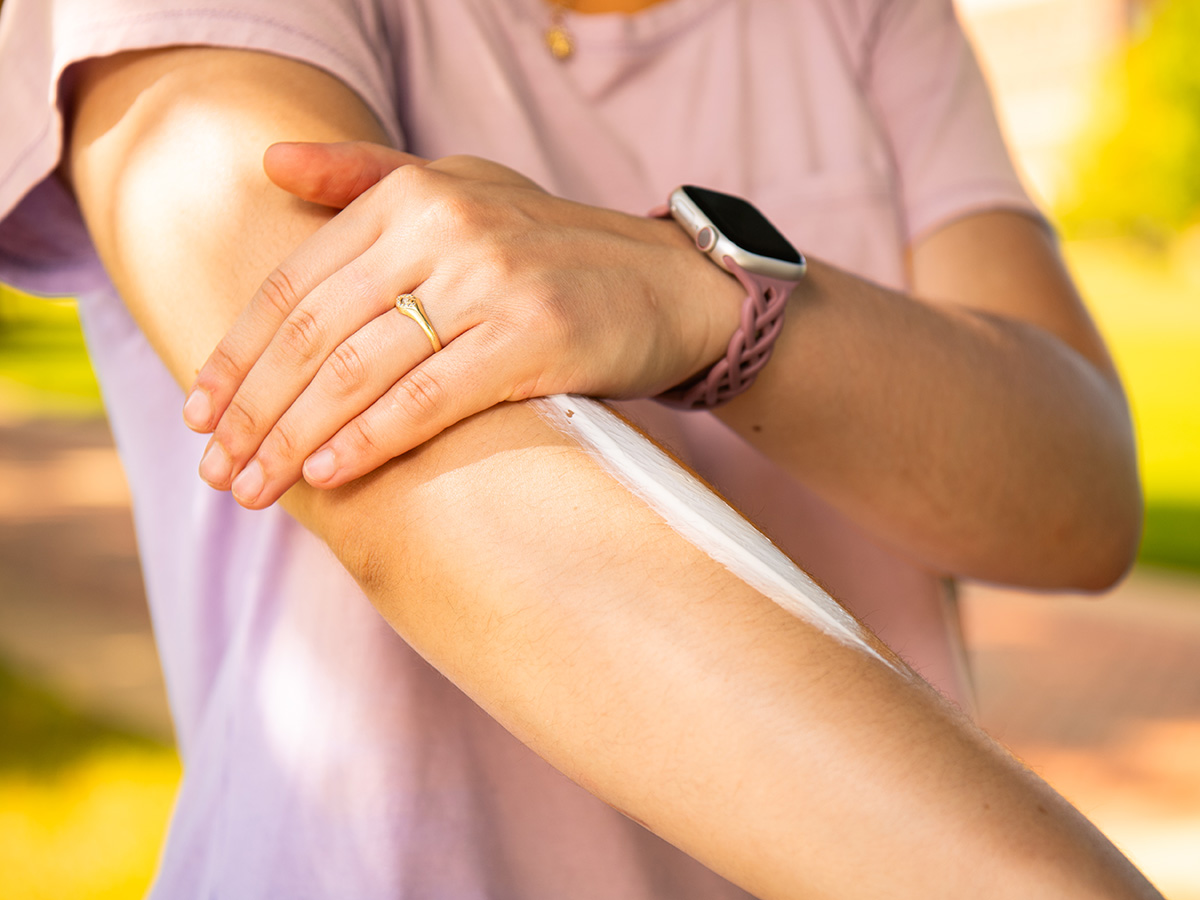 Ultraviolet radiation, a high-frequency form of energy from the sun, is classified in the same risk category as X-rays and nuclear radiation. As temperatures and sun exposure increase, experts at the University of Alabama at Birmingham are shedding light on what really happens to one’s skin when exposed to UV radiation and why sun protection is more critical than ever.
Ultraviolet radiation, a high-frequency form of energy from the sun, is classified in the same risk category as X-rays and nuclear radiation. As temperatures and sun exposure increase, experts at the University of Alabama at Birmingham are shedding light on what really happens to one’s skin when exposed to UV radiation and why sun protection is more critical than ever.
Braden McFarland, Ph.D., assistant professor in the Department of Cell, Developmental and Integrative Biology, says that, when UV rays hit the skin, they penetrate deep into the cells, causing direct and dangerous damage to our DNA.
“This damage distorts the DNA structure, forcing cells to either repair themselves or self-destruct,” McFarland said. “If the repair process is unsuccessful, it can lead to mutations and potentially skin cancer.”
She explains three types of UV radiation: UVA, UVB and UVC. While UVC is blocked by the Earth’s atmosphere, UVA and UVB reach our skin.
“UVA is lower in energy and generates free radicals that accelerate aging and wrinkle formation,” McFarland said. “However, UVB is the most dangerous because it directly attacks the DNA in skin cells.”
When skin cells are overwhelmed by UV damage, they die, triggering an immune response similar to wound healing. The redness, heat and pain of a sunburn, are signs of inflammation as immune cells rush into clear dead cells and begin the repair process. These cells release proteins that stimulate the growth of new skin cells.
“Cells have built-in mechanisms to assess DNA damage,” McFarland said. “If the damage is too extensive, they activate a self-destruct sequence known as apoptosis, which prevents the spread of mutations.”
Apoptosis is a vital defense against cancer that contributes to the peeling and discomfort associated with sunburn. She says there are four stages to sunburn healing:
- Inflammation – Redness and swelling from an increase in blood flow.
- Cellular repair – Immune cells clear debris and stimulate regeneration.
- Peeling – Dead cells are shed.
- Replenishment– New skin cells restore the damaged area.
“While the skin may appear to recover, some cellular damage can be permanent, increasing the risk of future cancers with repeated sunburns,” McFarland said.
McFarland says research into UV damage has deepened experts’ understanding of cancer biology and aging. UV exposure accelerates collagen breakdown, contributing to premature aging. It highlights the importance of protecting skin stem cells, which diminish with age.
“Sunscreens remain a frontline defense, blocking or absorbing harmful UV rays,” McFarland said. “There are also developing targeted therapies based on common UV-induced mutations, offering hope for more precise treatments in the future.”
She stressed that all skin types can suffer from DNA damage from UV exposure, so all individuals need to wear sunscreen.
“While melanin offers some protection, it does not make anyone immune,” McFarland said.